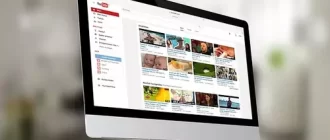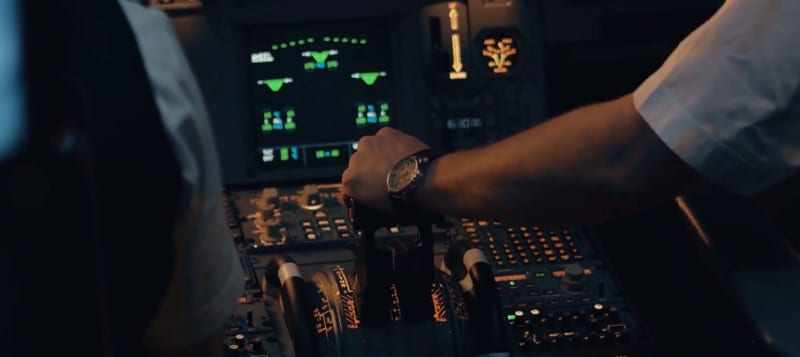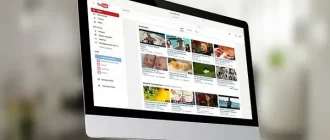YouTube SEO is more than just a fancy word savvy digital marketers use to complicate everything. It is an ongoing process of optimizing videos and channels for higher rankings and better reach on YouTube. But let’s discuss the dos and don’ts of YouTube SEO in this blog post in more detail.
While YouTube SEO is more complex than this article could discuss (even being 10-page long). But there are certain things that make or break YouTube rankings.
The difference between a video getting on the 1st page of YouTube search results and a video on the second page is 100k views or no views at all. Thus, everyone’s best interest is to rank higher for as many keywords as they can.
Unlike Google’s BERT and SMITH algorithms indexing both web pages and paragraphs, YouTube relies more on user engagement rather than just content or keywords.
If you seemingly do everything to boost your engagement and rankings with little results, going over this blog post can make sense.
The Do’s of YouTube SEO
Do Proper Keyword Research
While many creators use keyword tools like Ahrefs or WizStudio to find less competitive keywords for higher rankings in search results, a lot more don’t.

Love it or hate it, keyword research is an important part of YouTube SEO which can help you rank for your target keyword in the top 50 and steal viewers attention.
You can also use YouTube autosuggest to target longer variations of your main keyword, or use YouTube tag generator to scrape keywords from the top ranking videos. To get those keywords, simply type in 1-3 seed keywords into the search, and hit “Search”.
Use Keywords in Key Places [TDTV]
What are the key places and a secret TDTV you would ask. While YouTube suggests you use keywords throughout your video, they never disclose which part should include target keywords to rank better in search results. And for good reason.
As any platform which wants to keep viewers for as long as they can, YouTube wants creators not to staff videos with all possible keywords. Still, there are some places (TDTV) where keywords are necessary for higher CTR (click-through-rate). They also help YouTube algorithm better understand your video’s focus.

These key places are:
The first 70 characters of your video titles;
First 10-15 words of your description;
First 5-6 YouTube video tags;
First 10 seconds of your video.
Let’s call them the Rule of First.
Add Closed Captions/Transcripts
Adding captions and video transcripts can increase your video’s CTR, views, and watch time for its appeal to people who prefer to watch a video with a sound turned off.
And so, deserves the spot on this dos and don’ts of YouTube SEO list, right?
It is true that YouTube provides auto-generated captions, but better if you add your own custom captions and multilingual transcripts. Transcripts are the ultimate dos of YouTube SEO when the majority of your viewers come from countries where English is spoken as a second language.
Make Catchy Thumbnails
I won’t rumble how important are catchy thumbnails for video views and the creator’s reputation. Just a few tips on how you can maximize CTR. Stick to the CTF formula as one of the dos of YouTube SEO to improve your overall performance and video reach.

Colors: Get creative – use bright and notable colors relevant to your character, content and niche. Choose your color palette and keep layouts consistent. Type in your keyword into the search and go over the first 10 videos and channels. Think of the thumbnails they have, and how you can make yours to stand out.
Text: Nothing funky here. Any designer would tell you that the more strokes a font has the harder it is to read. Thus, the more chances a viewer could scroll past. Also, keep your font consistent so that users could associate certain content with your channel.
Faces: It is proven that naturally people look seconds longer when they see a face. If you are a vlogger, you almost certainly should have your face on the thumbnail. For companies and business channels other people and their reactions along with a logo would help their viewers identify content.
Track YouTube Engagement
One of the common mistakes is optimizing your video for YouTube SEO and not tracking the results. Checking video rankings and stats should have been first on this Dos and Don’ts of YouTube SEO list. But frankly, I think this list follows a logical order – first creation and optimization, then, rankings and stats, right?
Out of all the metrics you get from YouTube Analytics, engagement rate and video rankings single out. The average YouTube engagement rate is about 7%, and varies from video to video and niche to niche. Besides, saying engagement we mean not just the average number that gives you little information, but the set of exact factors to measure how engaged your viewers are. Here are the 10 key engagement metrics every creator should know.
Track Video Rankings and Stats
Video rankings is yet another part of the equation. Ahrefs, Brian Dean, and some of the most followed and respected YouTubers often stress the importance of ranking higher on YouTube. After all you make videos to get views, right? Once you have added keywords to your description, title, and tags, it’s time to check the video’s rankings.

- Copy-paste a video link into the first box;
- Add a keyword you want to rank for;
- Choose the location you want to check the rank in;
- Solve CAPTCHa and tap search.
If your video shows up in the top 50 results on YouTube you will see how you rank against similar videos.
Interact with Your Viewers
What do you do if after all YouTube SEO tricks your engagement rate is still low?
You go and interact with your viewers by giving the creator’s hearts to the best video comments, responding to questions, and chatting Live with subscribers.
A good rule of thumb is to extend your interaction beyond a video leveraging Community tab and collabs with other creators. Many successful creators appeared on multiple channels and podcasts and published community posts.
If you need some channel to take example from, freeCodeCamp.org not only uploads coding tutorials, but posts insightful and entertaining gifs, create polls and Live broadcasts. Watch a video where YouTube explains how to “build a fan family” of your own.
The Don’ts of YouTube SEO
Don’t Try To Make All Videos Best
Speaking of don’ts, it is physically impossible to make every video rank in the top 10 results for the target keywords on YouTube. So, “Don’t try to do everything best” is first on this dos and don’ts of YouTube SEO list.
Otherwise, you would end up exhausted and risk running out of YouTube ideas. Remember the old saying, slow and steady wins the race? It is best to save up your energy for a long-distance run and consistent uploads, rather than publish 1 video a day for a month, and then none.
Successful entrepreneur turned social media star Gary Vaynerchuck (@garyvee), has posted for 6 months with no results before he gained any traction. And even after he gained views and subscribers his typical 3 videos a week schedule remains unshaken. GaryVee’s channel today has nearly 3 million subscribers and over 200 million views. Imagine he would’ve stopped or slowed down after some time. So, put consistency over perfection.
Don’t Push Hard For Marketing
One of the key points of dos and don’ts of YouTube SEO is no-marketing. If you are a brand trying to get leads and clicks to turn them into paying clients, it is best to stick with paid video ads. Although you can have your own channel but rather use it for growing brand reputation uploading value content. This helps you build an engaged audience first before pitching your products.
If you are a creator who wants to grow your channel the same suggestion applies. Why would I market you ask. Nearly half of all creators on YouTube partner with brands or get into affiliate programs. They promoted sponsored videos, keep asking to “check links in the description”, and spoil watching experience.
Don’t Compromise on Quality
If you are just starting on YouTube with no video editing team to work on, it is best to publish once or twice a week quality content. You already know how you create one and where to start your video creation process if you have followed through this blog post.
However, if you have anyone to shoot and edit videos for you and are able to come up with interesting ideas, create more. Kurzgesagt – In a Nutshell is a good example of a successful YouTube channel which alerts subs that quality is preferred over quantity right off the bat. You will see “Quality > Quantity” on its channel banner.
That said, Gary Vaynerchuck has a radically different approach. “Quantity allows you to be more contextual and gives you more chances to resonate with your audience where quality does not” shares Gary in one of his videos.
Dos and Dont’s of YouTube at Glance
This is all for this 10 Dos and Don’ts of YouTube SEO tips. I hope you have got some insights into common SEO mistakes, and what tools might help you optimize videos. In case you’ve missed something or want a quick look without reading the whole post, here are tips to remember.
YouTube SEO Dos
- Do Proper Keyword Research
- Use Keywords in Key Places [TDTV]
- Add Closed Captions/Transcripts
- Make Catchy Thumbnails
- Track YouTube Engagement
- Track Video Rankings and Stats
- Interact with Your Viewers
YouTube SEO Don’ts
- Don’t Try To Make All Videos Best
- Don’t Push Hard For Marketing
- Don’t Compromise on Quality






